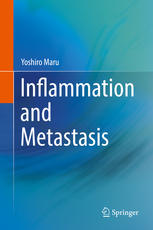Inflammation and Metastasis 2016
دانلود کتاب پزشکی التهاب و متاستاز
| نویسنده |
Yoshiro Maru |
|---|
| تعداد صفحهها |
505 |
|---|---|
| نوع فایل |
|
| حجم |
8 Mb |
| سال انتشار |
2016 |
89,000 تومان
این کتاب آخرین اطلاعات را در مورد متاستاز سرطان از نقطه نظر التهاب، به ویژه فعل و انفعالات ایمنی ذاتی ناشی از واسطه های درون زا اما نه پاتوژن های اگزوژن، با بینش هایی در مورد چگونگی درک مکانیسم های پیچیده متاستاز و همچنین تفسیر درمانی ارائه می کند. اهداف این کتاب شامل موضوع نقش های نوظهور برای خود لیگاندهای TLR4 است که عملکردهای جالبی با متاستاز و بیماری های خود التهابی مانند آرتریت روماتوئید دارند. برای مثال، اکثر درمانهای سرطانی که تا به امروز ایجاد شدهاند در ابتدا مؤثر هستند. با این حال، آنها در نهایت با موانع قابل توجهی در زمینه مقاومت دارویی، فرار سیستم ایمنی و پیشرفت متاستاتیک روبرو هستند. تصور می شود یکی از خود لیگاندهای TLR4 به هر سه فرآیند کمک می کند. ویژگی اصلی کتاب توضیح مفهوم التهاب هموستاز است که در آن اختلال در ریه ها یک ریزمحیط ریوی پیش متاستاتیک ایجاد می کند که بر ربودن اولیه سیستم دفاع ایمنی ذاتی در برابر عفونت تنفسی با واسطه تومور متکی است. . علاوه بر این، تفکر مبتنی بر ساختار از دیگر ویژگی های مهم این کتاب است. پیشنهاد می شود که التهاب یک مثلث عملکردی را با رگزایی و ترومبوز تشکیل می دهد که سرطان در مرکز آن قرار دارد.
با توجه به پیشنهاد پزشکی دقیق توسط پرزیدنت اوباما در ایالات متحده در سال 2015 و موفقیت اخیر درمان مبتنی بر تعدیل کننده ایمنی، این کتاب در انواع مختلف برای محققان جذاب خواهد بود. از رشته هایی با عنوان کتاب اتصال از جمله بدترین آنها بیماری (متاستاز) و رویداد زمینه ای (التهاب) است که در بسیاری از بیماری ها مشترک است.
This book provides the latest information on cancer metastasis from the standpoint of inflammation, especially innate immune reactions caused by endogenous mediators but not exogenous pathogens, with ideas on how to understand the complicated mechanisms of metastasis as well as to interpret therapeutic targets. The book includes the topic of the emerging roles of endogenous TLR4 ligands whose functions are shared intriguingly by metastasis and auto-inflammatory diseases such as rheumatoid arthritis. For example, most cancer therapies established so far are effective initially. However, they eventually face the great obstacles of drug resistance, immune evasion, and metastatic progression. One of the endogenous TLR4 ligands is thought to contribute to all three processes. The most important features of the book are to explain a concept of homeostatic inflammation, disturbance of which in the lungs gives rise to the establishment of a pre-metastatic pulmonary microenvironment based on primary tumor-mediated hijacking of the innate immune defense system against respiratory infection. In addition, structure-based thinking is another important feature of this book. It is proposed that inflammation forms a functional triangle with angiogenesis and coagulation, in the center of which cancer is located.
Given the proposal of precision medicine by President Obama in the United States in 2015 and the recent success of immune-modulator-based therapy, this book will appeal to researchers in a variety of fields with the title of the book connecting the worst disease (metastasis) and the most fundamental event (inflammation) that is common to many diseases.




